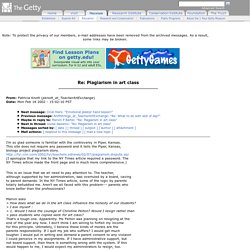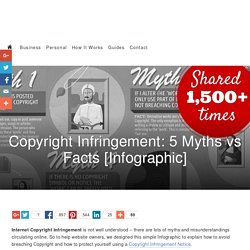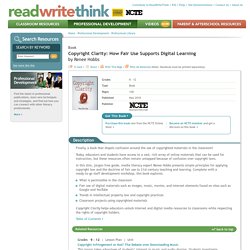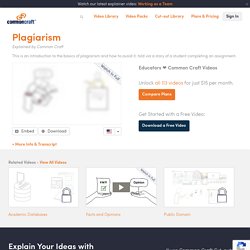

TeacherArtExchange (Education at the Getty) - Re: Plagiarism in art class. I'm so glad someone is familiar with the controversy in Piper, Kansas.

This site does not require any password and it tells the Piper, Kansas, biology project plagiarism story. (I apologize that my link to the NY Times article required a password. The NY Times article made the front page and is much more comprehensive.) This is an issue that we all need to pay attention to. The teacher, although supported by her administration, was overruled by a board, caving to parent demands. Marvin asks > How does what we do in the art class influence the honesty of our students? > 2. > 3. > 4. I constantly remind my students about the difference between imagery that is available and imagery that may not be. > One of best things I learned from my art education professor in grad school is > that I can teach art history at the end of the media lessons instead of "image > flooding" at the beginning.
I have too many thoughts on this subject. Patty. Copyright Infringement: 5 Myths vs Facts. Internet Copyright Infringement is not well understood – there are lots of myths and misunderstandings circulating online.

So to help website owners, we designed this simple Infographic to explain how to avoid breaching Copyright and how to protect yourself using a Copyright Infringement Notice. Use this Infographic on your website Download a PDF version of this Infographic here or copy and paste the code below into the html of your website: <b>++ Click Image to Enlarge ++</b><br /><a href=" ><img src=" alt="Internet Copyright Infringement"></a><br />Source: Copyright Infringement: Myths vs Facts from <a href=" >Legal123.com.au</a> Video transcript … There are a lot of Copyright myths, misinformation and misunderstandings out there at the moment – particularly when it comes to Copyright Infringement on the Internet.
Copyright belongs to the person who created a ‘work’. Copyright Is... Aasl11 copyright law. Copyright Clarity: How Fair Use Supports Digital Learning. Grades 9 – 12 | Lesson Plan | Unit Copyright Infringement or Not?

The Debate over Downloading Music This lesson takes advantage of students’ interest in music and audio sharing. Students investigate multiple perspectives in the music downloading debate and develop a persuasive argument for a classroom debate. Grades 6 – 8 | Lesson Plan | Standard Lesson Exploring Plagiarism, Copyright, and Paraphrasing Students investigate issues of plagiarism, fair use, and paraphrasing using KWL charts, discussion, and practice. Students as Creators: Exploring Copyright This lesson gives students the tools they need to consider the ethical issues surrounding use and ownership of copyrighted materials. Grades 6 – 8 | Lesson Plan | Unit Students as Creators: Exploring Multimedia Students are introduced to the genre of multimedia presentations through a review and analysis of online presentations. Copyright Law: From Digital Reprints to Downloads.
Copyright Kids! Copyright and Fair Use. HeLIOS - Hemingway Library Information Online Skills Tutorial. 7 Resources for Detecting and Preventing Plagiarism. 1.

The first thing I do when I want to check a student's work for plagiarism is to do a quick search on Google. If you notice that a student has strung together some phrases that you don't think they've written, put the suspected phrase inside quotation marks and search. You may want to search on Google as well as on Google Scholar. For more Internet search tools and strategies please see my free ebook Beyond Google - Improve Your Search Results. 2. 3. 4. Paper Rater is a free service designed to help high school and college students improve their writing. Plagiarism Explained by Common Craft. You have something in common with the smartest people in the world.

You see, everyone has ideas. We use our minds to create something original, whether it’s a poem, a drawing, a song, or a scientific paper. Some of the most important ideas are published and make it into books, journals, newspapers and trustworthy websites that become the building blocks for things we all learn. But ideas are also very personal, and we need dependable ways to keep track of the people behind the ideas we use because they deserve credit for their contribution, just as you do if someone uses your idea. Passing off another person’s ideas or words as your own, without credit, is called plagiarism.